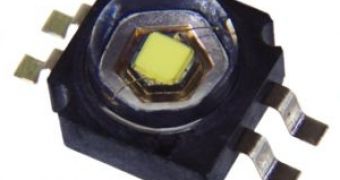When it comes to innovations that have made a serious damage, or have been good for the world, Philips has its share of the blame/congratulations. They are in a big way responsible for the comeback that LED's have made into the computer industry. Regarded as simple efficient ways of lighting up Christmas trees or serving as light bulbs replacements for flashlights, their usefulness didn't go past a certain evolutionary stage, probably because nobody believed in their potential.
Nobody except Philips, that is, they have taken LED development to the next level and proven that there was still some kick left in these little performers. The computer industry followed suit and began mass integration of the LED's into whatever they could. The first components to get upgraded were LCD monitors, whose lamp backlighting has been replaced by LED backlighting, which proved less expensive, with a lower heat output and smaller power consumption. Samsung has also announced that it wants to switch all of its product lines on LED backlighting by the end of 2008, so big chances will take place, all due to little components.
What Philips managed to do recently was to upgrade the performance of the LED's, which resulted in the neutral-white LUXEON L2 emitters and LUXEON K2 Star part. The LUXEON K2 supports more than twice the power input of regular LED's, running at up to 1500mA, from the original value of 700mA. They also withstand up to 150 degrees Celsius and can deliver more than 130lm-140lm.
Steve Landau, director of Marketing Communications, Philips Lumileds said: "With the increases in light output performance and efficacy, there is expanding demand for power LEDs that deliver the quality of light required for general lighting applications. Designers of residential applications, such as recessed can lights need uniformity, high color rendering and a warm white color temperature at 3000K. In many retail and commercial applications, a cooler temperature of 4100K is desired. With the new binning and phosphor technologies in LUXEON K2, the needs of lighting designers in both markets can be addressed."

 14 DAY TRIAL //
14 DAY TRIAL //